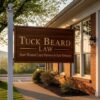In recent years, Japanese Domestic Market (JDM) vehicles have captured the hearts and imaginations of American car enthusiasts like never before. This growing fascination with Japanese automotive engineering has transformed from a niche interest into a thriving subculture that spans across the United States. From pristine Skylines to meticulously maintained Supras, the JDM scene continues to evolve and expand, bringing with it a unique community united by their appreciation for these distinctive vehicles.
Understanding the JDM Phenomenon
The term “JDM” specifically refers to vehicles and parts manufactured for use in the Japanese market. Unlike their American counterparts, these cars often feature different specifications, performance capabilities, and design elements that weren’t originally available to U.S. consumers. The allure of exclusivity, combined with legendary reliability and performance potential, has created an almost mythical status around certain JDM models.
What began as an underground movement has blossomed into a mainstream passion. Car meets dedicated to JDM vehicles now attract thousands of enthusiasts, while social media platforms overflow with content celebrating Japanese automotive culture. This surge in popularity can be attributed to several factors, including the influence of films, video games, and the reaching of legal import age for many coveted 1990s models.
The 25-Year Rule and Its Impact
A significant catalyst for the JDM boom in America has been the infamous 25-year import rule. This regulation allows vehicles not originally sold in the U.S. to be imported once they reach 25 years of age without needing to meet modern American safety and emissions standards. As iconic models from the golden era of Japanese performance cars—such as the R32 and R33 Nissan Skylines, Mitsubishi Evolutions, and Honda Type Rs—reach this milestone, enthusiasts can finally bring these dream machines to American shores legally.
This rule has not only expanded the variety of JDM vehicles seen on American roads but has also created a thriving industry around importing, restoring, and maintaining these cars. Specialized shops across the country now cater to JDM enthusiasts, offering expertise in everything from routine maintenance to complete restorations. Texas JDM Motors has established itself as a trusted source for those seeking authentic JDM components, focusing on quality parts that meet the exacting standards of discerning enthusiasts.
The Engineering Advantage
Japanese vehicles from the 1990s and early 2000s are often celebrated for their engineering excellence. During this period, Japanese automakers pushed boundaries with advanced technologies and innovative designs. From Honda’s VTEC system to Toyota’s robust 2JZ engine, these engineering marvels delivered exceptional performance and reliability that continues to impress today.
Many enthusiasts are drawn to JDM vehicles precisely because of this engineering pedigree. The potential for modification and performance enhancement without sacrificing reliability has made these platforms particularly appealing. Furthermore, many JDM engines and drivetrains were overengineered from the factory, providing headroom for increased power while maintaining longevity—a combination rarely found in vehicles from other markets.
Beyond Performance: The Aesthetic Appeal
JDM culture extends beyond performance specifications and engineering excellence. The aesthetic elements—from factory options never offered stateside to aftermarket styling inspired by Japanese automotive trends—play a crucial role in the movement’s popularity. Clean, purposeful modifications that enhance a vehicle’s character while respecting its original design philosophy have become hallmarks of tasteful JDM builds.
This appreciation for subtle yet impactful styling has influenced broader automotive culture. Elements once unique to JDM builds—such as certain wheel designs, lighting modifications, and interior customizations—have crossed over into mainstream car culture, demonstrating the broader influence of Japanese automotive design sensibilities.
Building Community Through Shared Passion
Perhaps the most significant aspect of the JDM movement in America is the community it has fostered. From local car meets to national conventions, these gatherings bring together diverse groups of people united by their shared enthusiasm. Friendships form around the collective experiences of hunting for rare parts, troubleshooting mechanical issues, and celebrating automotive heritage.
Online forums and social media groups dedicated to specific makes and models have created global networks where knowledge is freely shared. Newer enthusiasts can learn from experienced builders, while everyone benefits from the collective wisdom of the community. This collaborative spirit distinguishes the JDM scene and contributes to its continued growth and evolution.
Looking Forward: The Future of JDM Culture in America
As we look toward the future, the JDM movement shows no signs of slowing down. As more iconic vehicles become eligible for import, the landscape of Japanese cars on American roads will continue to diversify. Meanwhile, a new generation of enthusiasts—many inspired by digital media and online communities—is embracing JDM culture with fresh perspectives and innovative approaches to preservation and modification.
The enduring appeal of these vehicles speaks to something timeless about great automotive design and engineering. In an era of increasing automation and homogenization in the automotive industry, the character and driver engagement offered by these Japanese classics provide a compelling alternative that resonates with enthusiasts seeking a more connected driving experience.
Whether you’re a longtime JDM aficionado or newly interested in this fascinating subculture, the community’s passion and knowledge make it an approachable and rewarding space to explore. The rising popularity of JDM vehicles represents more than just a trend—it’s a testament to the enduring legacy of Japanese automotive excellence and the universal language of automotive enthusiasm that brings people together across cultures and generations.









